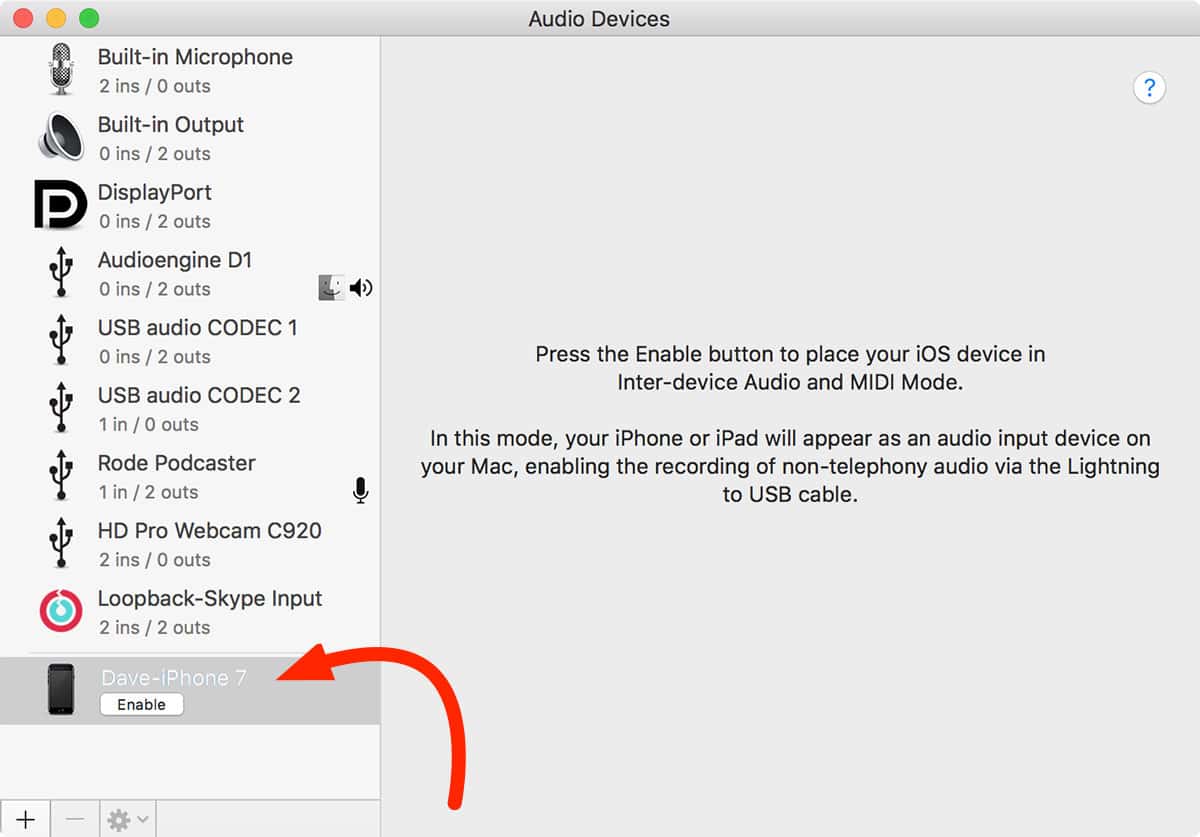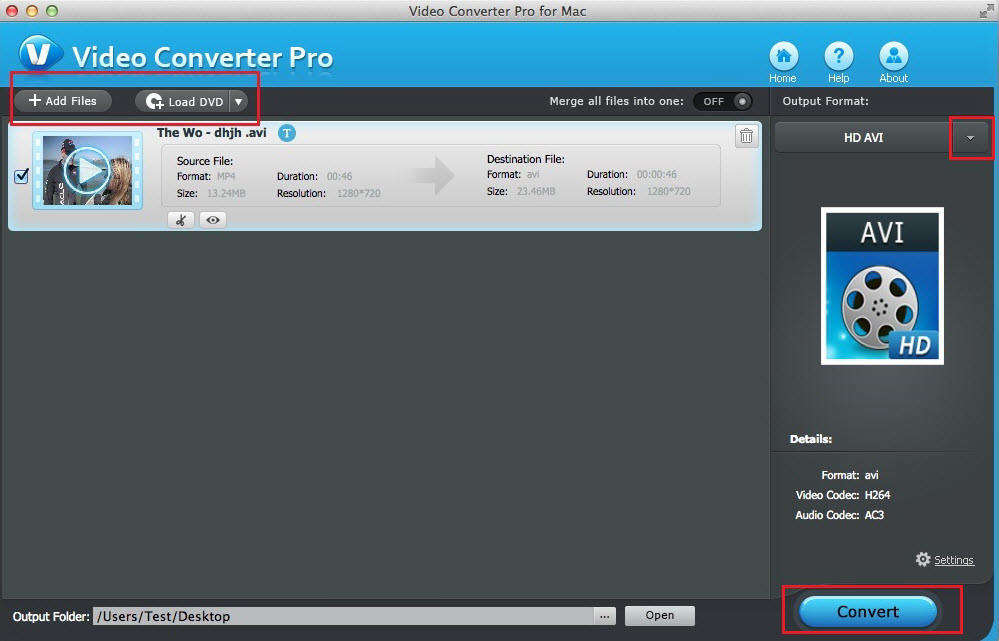You are missing an audio codec or the audio is a format that is not supported. To check which audio codec your file is encoded with, see No audio or audio is distorted with DivX movie playback on a Mac for reference. Note: If your file is encoded with MPEG2 or AC3, see Missing Audio Codec for Mac.
If you own a Mac, you already have a high-resolution media file server at your disposal, with very little tweaking required to pass high-quality audio to your audio gear. I recently decided to set up my Mac in this way, to deliver hi-res throughout the signal chain--from my music library, to the player, to the DAC, to my preamp, amp, and loudspeakers (or preamp to headphones). Here is how I did it.
- DivX codec - Installing DivX codecs for QuickTime player is a must to make sure users will be able to.
- In the Structure area below, enable the Use option next to the driver used by the USB microphone (USB Audio CODEC, for example). Enable the Clock option next to that device and click on Done.
Building Your Hi-Res Music Library
The process starts with ripping or downloading music files directly to either your Mac's internal hard drive or an external drive, or designating a cloud site for your file storage (more on this in a minute). I store my music library on a 3TB Seagate external drive. Many people prefer to use an external drive because loading up your main hard drive with music files can potentially slow your computer's overall performance, especially when you get to the end of your drive's storage limits.
Opinions will vary on what constitutes hi-res audio, but I set my sights on resolutions equal to or better than 24-bit/96-kHz. We all know that your system is only as good as its weakest link, so I started with either 24/192 or 24/96 FLAC files. Hi-res files may be offered in the FLAC (Free Lossless Audio Codec) or AIFF (Audio Interchange File Format) format, as well as DSD (Direct Stream Digital) and MQA (Master Quality Authenticated). DSD is the Philips/Sony system used to create the SACD (Super Audio Compact Disk) format, while MQA is a very clever codec that compresses the relatively little energy in the higher frequency bands to make the files smaller while retaining a hi-res result (it's also a good format for streaming services). To get the highest quality, you will want to avoid lossy formats like MP3 (Moving Picture Experts Group Layer-3), AAC (Advanced Audio Coding), and OGG (Ogg Vorbis, the name Ogg derives from the jargon word ogging) that sacrifice audio quality for file size. This was important when storage was expensive, but now storage is plentiful and cheap.
Hi-res music files are available for download from a number of websites, including: HDTracks.com,
primephonic, HiRes Download, iTrax.com, B&W's Society of Sound, Acoustic Sounds, Chandos, and�Blue Coast Records. If you're looking for suggestions on high-quality audio recordings, check out the reviews on our sister site, AudiophileReview.com. Here are a few great-sounding albums (all available as hi-res downloads) that I'd put on my list of desert island discs:
/article-new/2018/03/Bluetooth-audio-codecs-800x435.jpg?lossy)
Santana: Abraxas
Mozart: Great Mass in C minor
Thelonious Monk Orchestra: At Town Hall
The Rolling Stones: Sticky Fingers
Bob Marley: Legend (you are on a desert island, after all)
Steely Dan: Aja
Jethro Tull: Aqualung
Cloud Backup
About a year ago, I grew concerned that my entire life's savings of music--some of which is irreplaceable original music from the various bands I've been in--was all in one place, so I looked to the cloud for a backup/disaster recovery solution. My current total storage need is approximately 2.4 TB. Apple's iCloud offers five gigabytes of free storage, which isn't nearly enough for my music files, so I opted for the 2TB plan that costs $20 per month. I had to leave some of my more esoteric albums off the iCloud drive to fit under the 2TB size limit.
Another cloud option is Google Drive, which offers 15 GB for free or one terabyte for $9.99/month; then it jumps to 10 TB for $99.99 monthly. Microsoft looks at storage a bit differently, tying its One Drive storage to the MS Office suite. When you purchase MS Office 365, you get 1 TB of storage. All your Excel spreadsheets, Word docs, and PowerPoint presentations are automatically stored there and are available for collaboration between users. There isn't anything preventing you from storing your music library there, but access is via Microsoft's Groove Music Pass, which is $9.99 per month in addition to the $99 annual cost of MS Office 365.
Amazon's Drive allows you to upload up to 250 songs for free. Subscribe to Amazon Prime ($99 annually) and get 5 GB of storage; for another $59.99 per year, you get unlimited storage. I currently use Apple's iCloud because I've been deeply invested in the Apple ecosystem from the first-generation iPod, but Amazon's value proposition is compelling. I am strongly considering making the switch. (If anyone out there has made the switch, I'd love to hear about your experience in the Comments section.)
Playback Software
Once you have begun to build your hi-res audio library, how do you play the files in a way that maintains their high bit and sample rate? I chose to download the VLC media player to my Mac (it's free) because it's capable of 24/96 and 24/192 native hi-res output. The VLC player can be downloaded here.
As an alternative to VLC, you might consider the VOX Music player, which is also free and can be downloaded here.

Why not just use iTunes? The iTunes Store only sells music in the compressed AAC format, and the iTunes player doesn't support the most widely sold lossless format: FLAC. Some hi-res file formats like AIFF may be played by iTunes but will not be at their native hi-res rates. Beware: If you convert a 24/96 FLAC file to ALAC, for example, you will not get the original file's full resolution.
Connections
There are three ways to get hi-res audio out of your Mac: 1) through an optical Toslink cable connected to the headphone output; 2) through a USB cable; and 3) through a standard stereo eighth-inch mini-jack connected to the headphone out--which will use the Mac's excellent internal DAC that supports up to 24-bit/192-kHz.
I suppose you could also count Bluetooth as the fourth way, but I'm not convinced that, even with A2DP negotiating between the transmitter and receiver the best CODEC available, you aren't losing audible quality in the wireless transmission.
Any of the above three connections ensures output of your audio files at the full resolution. Options one and two are still in the digital domain, so you will need to convert the signal to analog before sending it along its path that ultimately leads to your analog ears. The HTR archive is full of reviews that will steer you to a great digital-to-analog converter (DAC) at any price point. Just remember to make certain that the DAC supports the highest quality files in your catalog.
The next component in line is either your preamp or integrated amp. My setup includes a tube preamp that has both a headphone output and individual right and left line-level RCA outputs, which then feed either my tube or solid-state amplifier (I have one of each). Either amp then leads to my loudspeakers. If I'm listening through headphones, they are fed directly from my preamp.
My Results
I am enjoying incredible results using my Mac as a hi-res server. When comparing hi-res FLAC files via VLC to music coming from my iTunes library at 16/44.1, the difference is truly amazing in terms of imaging, dynamic range, extended high and low frequencies, clear and detailed mids, and the all-important warmth, air, and intimacy. When listening to the same song, switching only the file resolution, the iTunes files sounded flat and one-dimensional. Don't believe me? I recently read an excellent open-access paper on our ability to hear differences with high-resolution audio that can be found here.

You Can Take It With You
Want to enjoy your higher-quality audio on the go? That's become a lot easier, too--thank to players like Astell & Kern's AK240, Sony's NW-ZX2, Onkyo's DP-X1, Questyle's QP1R, and HiFiMAN's HM802s and HM901s. Do these players offer an improvement over a basic standard-res player? Yes, but remember that your environment and choice of headphones will impact your ability to hear all the differences.
Final Thoughts
Of course, there are a lot of excellent hi-res digital audio players on the market that would make a great addition to your gear rack, if you prefer a dedicated component. But if you're looking for high quality on a budget and you already own a Mac, then why not work with what you already have right in front of you? My results were outstanding.
I would be remiss if I didn't mention the importance of how the music came to exist in the first place. The composition, the quality of the musicianship, the groove (or the tempo in classical pieces), the production, the mix, and the mastering process ... all of these have great impact and ultimately contribute to what resonates with you. I've heard amazing music that was recorded in the 50s and really poor-sounding music that was recorded mere months ago ... so technology is one thing, passion another.
Usb Audio Codec Driver For Mac
Additional Resources
� Chasing the Holy Grail of Audio at HomeTheaterReview.com.
� Examining My Love/Hate Relationship with Video Discs at HomeTheaterReview.com.
� What's the Ideal Speaker Driver Configuration? at HometheaterReview.com.
Features
- Efficient (fast and great compression) — Monkey's Audio is highly optimized and highly efficient
- Perfect sound — absolutely no quality loss, meaning it sounds perfect and decompresses perfect (it's lossless!)
- Media Center™, Foobar™, WMP™, Winamp™, and more support — supported by most popular players and rippers
- Easy — the Windows environment interface is both powerful and easy to use
- Free — Monkey’s Audio is completely free!
- Error detection — Monkey’s Audio incorporates redundant CRC’s to ensure proper decompression of data (errors never go unnoticed)
- Tagging support — Monkey’s Audio uses its own extremely flexible APE Tags so you can easily manage and catalogue your Monkey’s Audio collection
- External coder support — you can use Monkey's Audio as a front-end for all of your encoding needs
- Freely available source code, simple SDK and non-restrictive licensing — other developers can easily use Monkey's Audio in their own programs, and there are no restrictive licensing agreements

Description
Gom Player Ac3 Audio Codec For Mac
Monkey’s Audio is a fast and easy way to compress digital music. Unlike traditional methods such as mp3, ogg, or wma that permanently discard quality to save space, Monkey’s Audio only makes perfect, bit-for-bit copies of your music. That means it always sounds perfect – exactly the same as the original. Even though the sound is perfect, it still saves a lot of space (think of it as a beefed-up Winzip™ your music). The other great thing is that you can always decompress your Monkey's Audio files back to the exact, original files. That way, you'll never have to recopy your CD collection to switch formats, and you'll always be able to perfectly recreate the original music CD.
